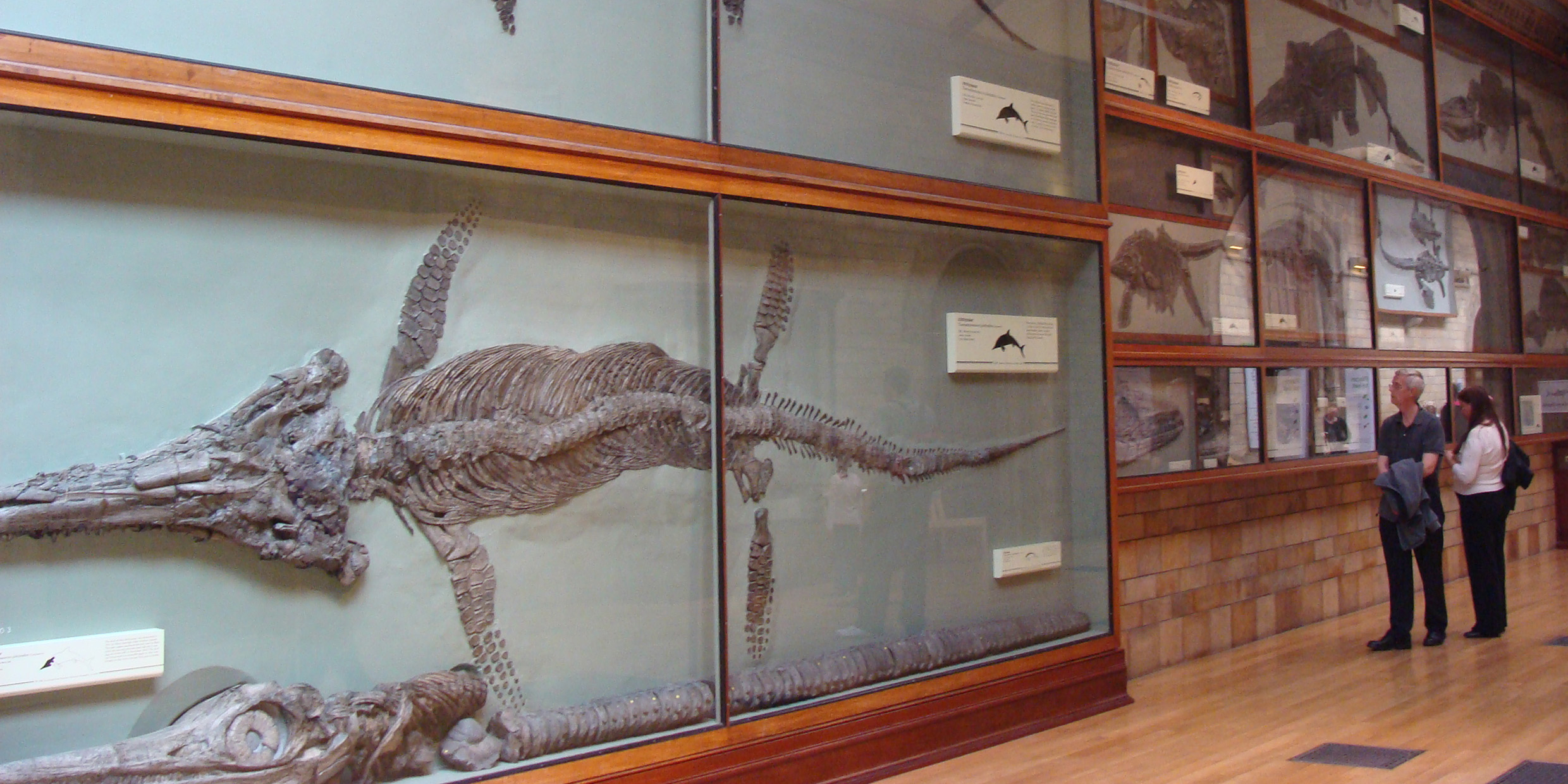Originally published 28 November 2004
Among the fossil hunters who opened our eyes to Earth’s antiquity, none is more justly famed than Mary Anning, who lived in Lyme Regis in Dorset, England, during the early-19th century.
She came from humble origins, and was not adverse to scrambling among the crumbling Jurassic strata of Dorset’s coast in voluminous skirts. At the age of twelve, she found what turned out to be the world’s first ichthyosaur (“fish-lizard”), an extinct reptile so perfectly adapted for sea life that in some respects it resembles a fish, with fore and hind legs modified to function as fins. This is not to say that no one had previously observed ichthyosaur fossils (quarrymen had been turning out mysterious creatures from the rocks for centuries), but not until Anning’s specimen was examined did geologists recognize that what they were looking at was an animal unlike any that exist on the planet today.
Soon more and better specimens came tumbling from the cliffs. The stony ichthyosaur impressions, when entire, were typically twelve or fifteen feet long, with long snouts and gaping eye sockets, and their prevalence in the rocks of Lyme Regis suggests that the animals were quite common in Jurassic seas, 100 million years ago. During her brilliant career as a fossilist, Anning found many kinds of ichthyosaurs, as well as plesiosaurs (“near-reptile,” another large marine vertebrate), and Britain’s first pterosaur (a flying reptile).
Lyme Regis in Anning’s time was a popular summer tourist destination — as it is today — and she was able to make a modest living selling common fossils as souvenirs. Her more important finds made their way to the eminent savants of London’s Geological Society, founded in 1807 to facilitate interest in the emerging science of geology. Although Anning was as knowledgeable about the fossil creatures as many of her university-educated scientific colleagues, it was her fate to be female, of low birth, and of a dissenting faith, all of which denied her access to the scientific academies. The gentlemen geologists of London recognized Anning’s talent, but they did not always give her due credit when it came time to publish descriptions of her fossils.
Several of Anning’s finest ichthyosaur and plesiosaur specimens now reside in the British Museum of Natural History, including her largest ichthyosaur, in what I like to call “The Hall of the Flat Beasts,” a long gallery whose walls are adorned from floor to ceiling with fossilized marine reptiles splendidly displayed, including a few plaster replicas of important specimens in foreign museums. No matter how rotund these creatures were in life, when they fell dead to the seafloor and became buried in sediment their skeletons collapsed or were pressed nearly flat, so that when they are revealed in the strata they have an intaglio appearance, like carvings by Renaissance masters.
The gallery has not changed since I first visited the museum in 1968, when I lived for a year almost across the street. Most of the museum’s other exhibit spaces have since been modernized, but it would be hard to improve The Hall of the Flat Beasts; I hope the curators have the good sense to leave it alone, since it happily conveys the passion for collecting that characterized 19th-century England.
One ichthyosaur specimen in the gallery (not Anning’s) contains six unborn young inside its body, and another has three unborn young with the almost perfect impression of a fourth being born tail first just as the mother died. A Lyme Regis ichthyosaur has bits of another ichthyosaur between its teeth, part of the creature’s last meal. To move along the gallery from specimen to specimen is like being taken back two hundred million years to vanished seas teeming with Loch Ness monsters — eating, being eaten, mating, bearing young.
When I last visited the gallery in the fall of 2003, an adjoining room was offering a special exhibit on that favorite of all dinosaurs, Tyrannosaurus rex, complete with an animated life-sized model. As I sat on a bench in the Hall of the Flat Beasts among seafaring monsters of Jurassic seas, every now and then from the other room came the disconcerting roar of carnivorous, land-trodding Tyrannosaurus rex. I turned to my right and exchanged a wink with an imagined Mary Anning, sitting beside me on the bench among her treasured relics of the past.



